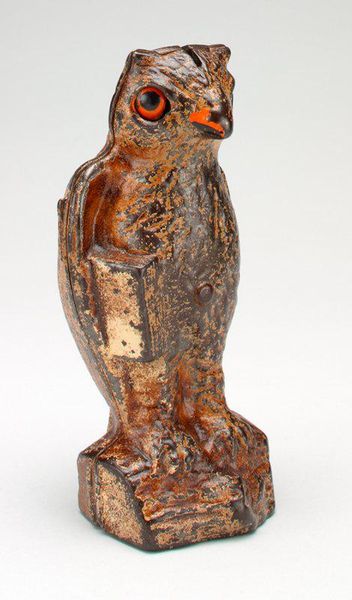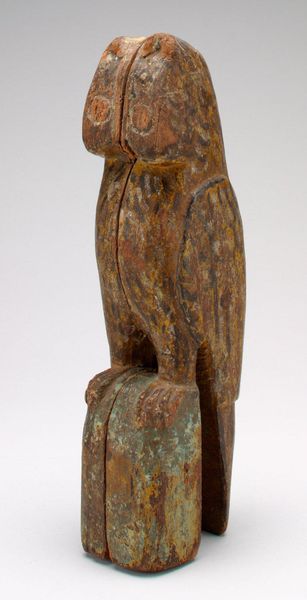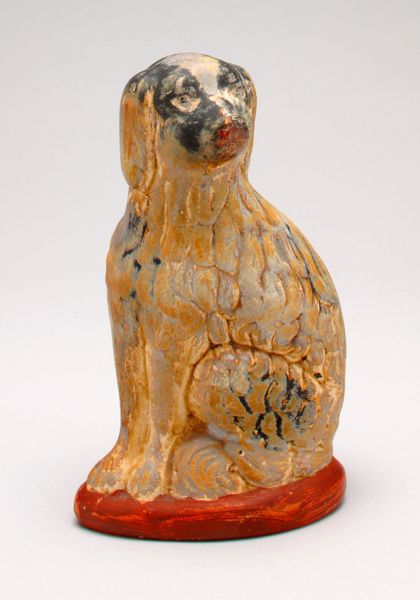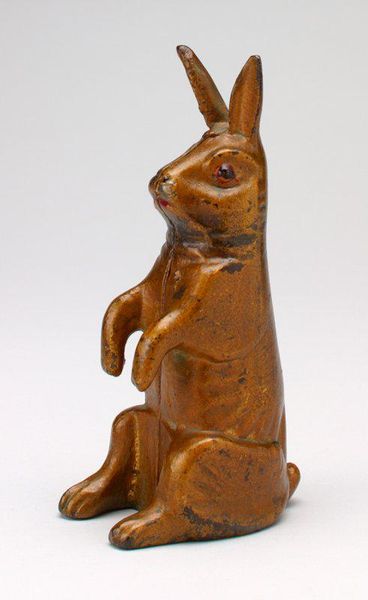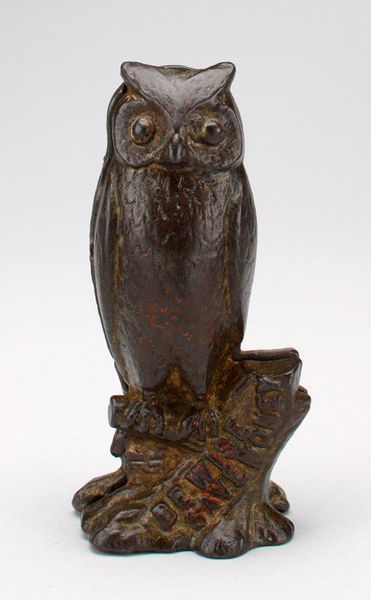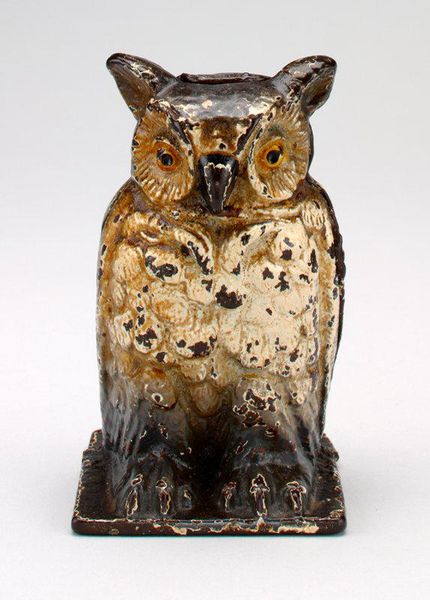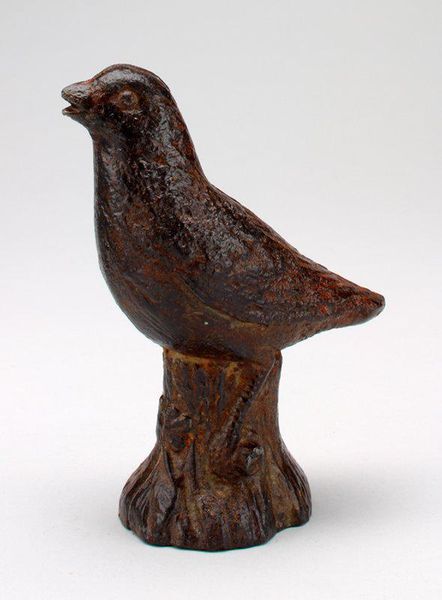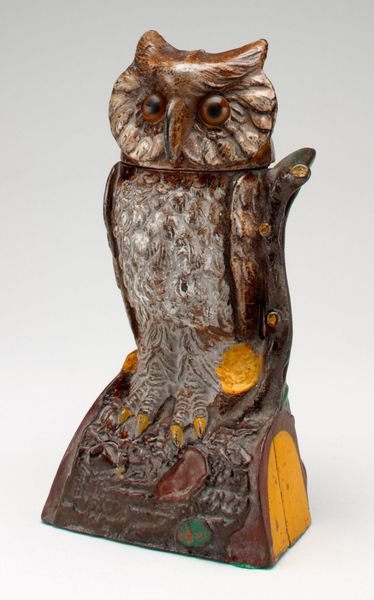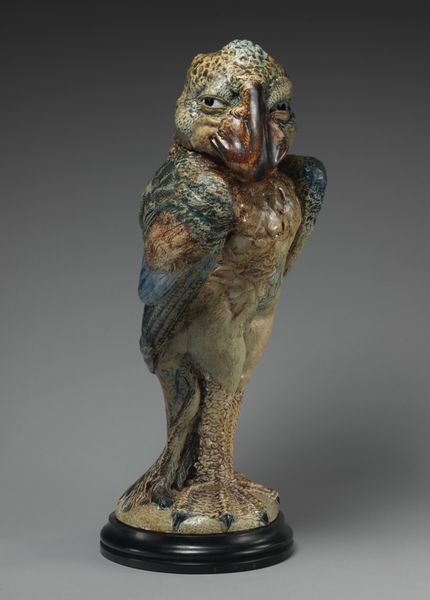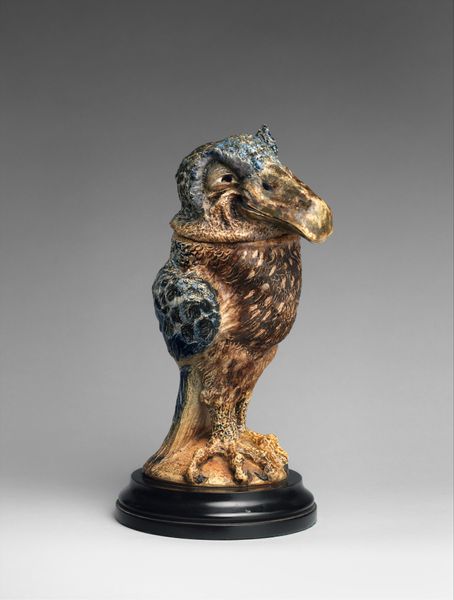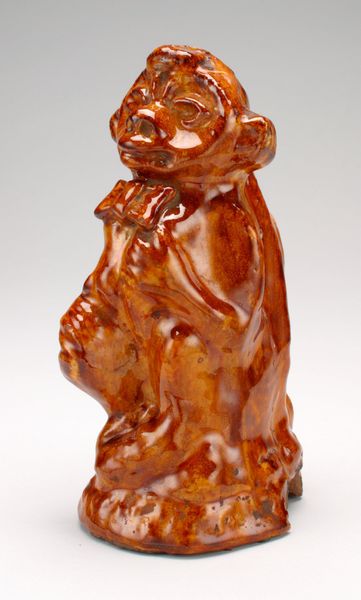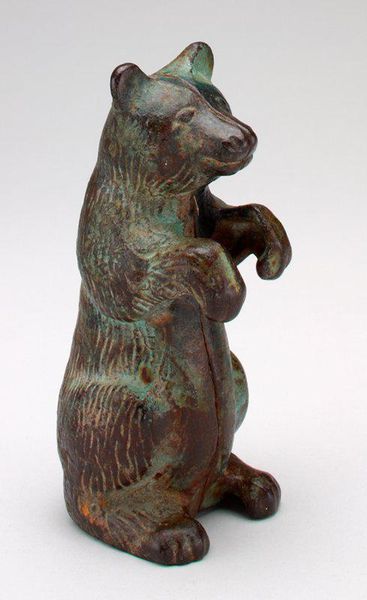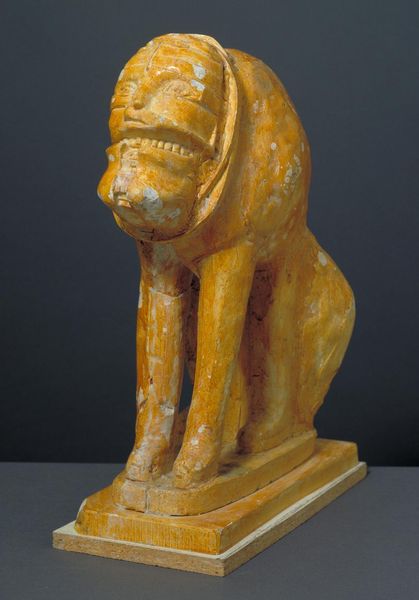
assemblage, metal, sculpture
#
assemblage
#
metal
#
sculpture
#
figuration
#
sculpture
Dimensions: 5 3/4 x 2 1/4 x 1 13/16 in. (14.61 x 5.72 x 4.6 cm)
Copyright: No Known Copyright
Curator: We’re standing before an intriguing sculpture titled "Owl," created around 1926 by M. Elizabeth Cook. The piece, residing here at the Minneapolis Institute of Art, is predominantly crafted from metal in the form of an assemblage. Editor: Immediately, I'm struck by the owl's imposing posture. It conveys a sense of stoic watchfulness, almost as if it’s eternally guarding a secret. But beyond that, I'm quite interested in its aged appearance and apparent rough fabrication. Curator: Indeed. Let's delve into its formal construction. Notice the deliberate use of lines; they are mostly simplified, aiming more to suggest form than to precisely replicate an owl’s features. The coloration, while weathered, creates a play of light and shadow which highlights the artist’s attentiveness to texture. We can almost see hints of the original bronze, or ochre shades now obscured by age. Editor: True, that weathering piques my interest. Knowing that this sculpture involves metal assemblage pushes me to question the means of its production. How was it fabricated? What tools were used to manipulate this rigid material, and more importantly, was this sculpture intended for everyday use rather than to be only appreciated aesthetically? Also, what was Cook's involvement? Curator: Those are pertinent questions. Cook’s artistic practice, while not heavily documented in this period, often played with ideas of combining traditional craftsmanship with emerging modernist sentiments. This owl, with its direct gaze, also alludes to older, folkloric interpretations of owls as symbols of wisdom and clairvoyance, now re-imagined through a modern lens. Editor: Interesting! If you observe closer, the ridge running along its side is likely there as a money slot; perhaps the sculpture was originally created for commerce, meant as some form of novelty rather than fine art. Also the material may indicate the status for which it was intended—or the relative value for its maker. Curator: The layering of possible significations is one reason why "Owl" remains fascinating. Considering your analysis about value, its dual nature embodies artistic representation and possible manufactured purposes which invite a critical approach for thinking how such object might fit into wider systems and networks for both display and access. Editor: It definitely does. On the whole, examining it, both as object of display and method of utility encourages us to see value and making not as fixed and stable categories. Curator: An astute observation, and fitting for an artwork that blends figuration, design, and materiality. Editor: Yes, I completely concur. I'll certainly be spending more time trying to examine more art and consider its purpose beyond mere aesthetic intention.
Comments
No comments
Be the first to comment and join the conversation on the ultimate creative platform.
